TMJ Treatment – Centennial, CO
Helping You Find Relief from Jaw Pain

TMJ disorder, also referred to as TMD, is a common condition that is estimated to impact around 12 percent of the population, being more common in women than men. Many patients who live with TMD experience painful symptoms that can impact their day-to-day lives when left untreated, like lockjaw, pain while chewing and speaking, and even bruxism that can cause migraines. Our team at Homestead Dental offers multiple personalized options for TMJ treatment in Centennial to help you find relief and reclaim your life.
Why Choose Homestead Dental for TMJ Treatment?
- We Use Advanced Diagnostic Technology
- Find Fast Relief with BOTOX for TMJ
- Friendly & Compassionate Team of Dentists
What Is TMJ Disorder?
TMJ disorder (TMD) is a condition that impacts the joints that connect your lower jaw to your skull. These allow you to easily open and close your mouth to talk, yawn, chew your food, and do so many other day-to-day actions. When these joints sustain additional tension, force, or are affected by trauma, they can result in pain and a variety of other chronic symptoms when left untreated. Our team at Homestead Dental can help address these with personalized TMJ treatments.
Symptoms of TMJ Disorder

TMD can be identified by an array of different symptoms. Some patients may experience only one or two of these common signs, while others may experience all of them. Here are TMJ symptoms to look out for that can indicate the need for intervention:
- Jaw tenderness or pain
- Aching in and around the ears
- Difficulty or pain while chewing
- Facial aching
- Lockjaw
- Difficulty opening and closing the mouth
- Clicking or popping sounds while opening or closing the mouth
Types of TMJ Treatment
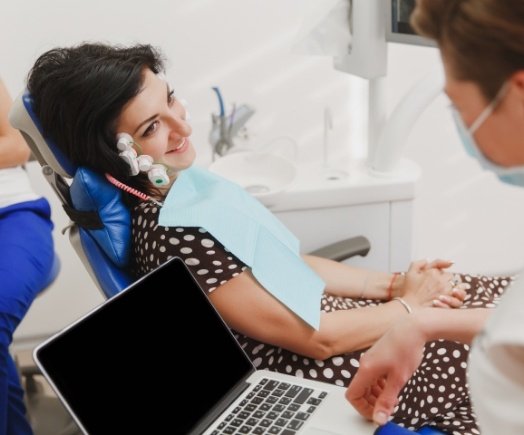
Our dentists offer multiple different non-invasive TMJ treatments to help ease your discomfort based on the underlying cause of your condition. We may suggest any of the following treatments to provide you with relief from your TMJ symptoms.
Equilibration/Occlusal Adjustments
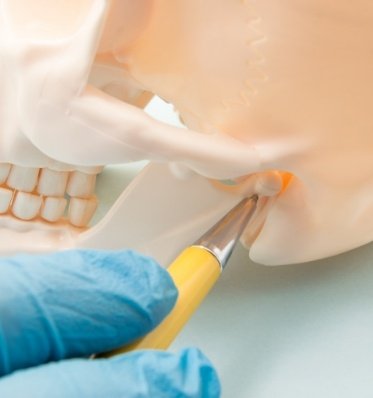
Sometimes, misshapen teeth or ill-fitted dental restorations can result in a change in the bite, leading to jaw joint tension and discomfort. We can help correct these bite problems by re-shaping these restorations and teeth to better fit together.
Occlusal Splints
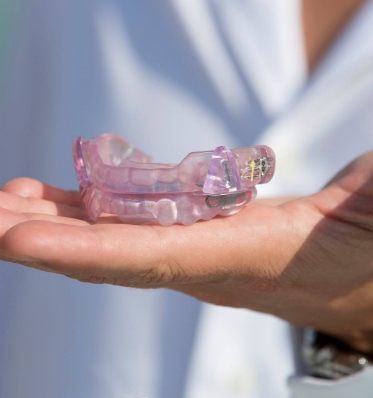
For those that experience bruxism (chronic nighttime teeth grinding and/or jaw clenching) along with other TMJ symptoms, we also offer customized orthotic devices called occlusal splints. When worn as you sleep, the splint shifts the jaw into its ideal position to ease strain on the joints, alleviating the severity of your TMJ symptoms with time.
Non-Invasive MLS Laser Treatment
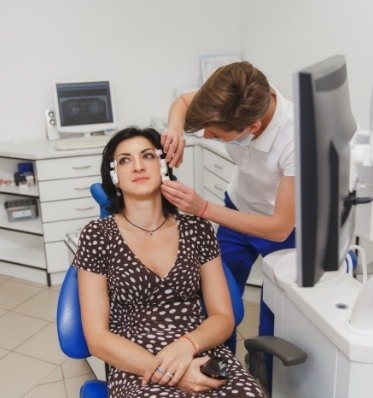
For our patients who experience acute TMJ attacks that lead to discomfort, we can utilize our MLS laser to help reduce pain, inflammation, and stimulate immediate healing.
BOTOX for TMJ Treatment
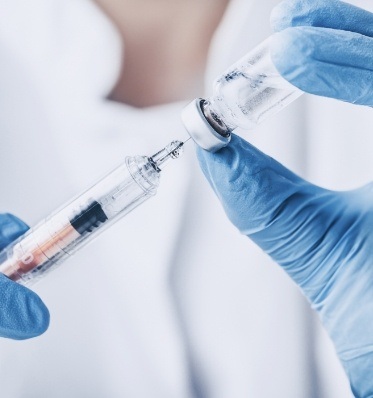
BOTOX is known for its cosmetic benefits, but did you know that it also has some medical applications? It can help ease TMJ symptoms by relaxing the muscles surrounding the jaw, providing months of relief from pain with a single treatment. The effects also kick in relatively quickly, typically within a week or two. BOTOX injections are often combined with other treatments to provide fast pain relief while also optimizing long-term results.
What Is BOTOX?

BOTOX is the brand name for a diluted form of botulinum toxin, a type of bacteria. While the words “toxin” and “bacteria” might seem scary, the reality is that BOTOX has a long history of providing benefits to patients. When it is strategically injected into the muscles near the temporomandibular joint (TMJ), it can lead to powerful pain relief. It can also reduce the frequency and severity of migraines and other symptoms that are related to TMJ disorder.
Placing the injections is fast (an appointment usually lasts just 20 minutes or so), and the results usually become noticeable within a week or two.
Are You a Good Candidate for BOTOX for TMJ Treatment?
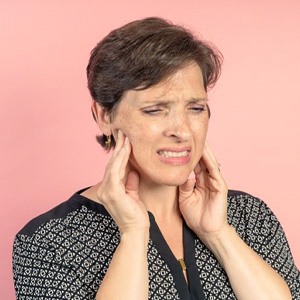
BOTOX may be a suitable treatment option for almost anyone who is struggling with symptoms of TMJ disorder, including:
- Pain and tenderness in the jaw and surrounding muscles
- Lockjaw
- Bruxism (teeth grinding and clenching)
- Tension in the facial muscles
- Headaches and migraines
- Clicking and popping in the jaw joint
BOTOX can provide pain relief that lasts for 3 months or longer for most patients. However, it is important to keep in mind that other treatments may be necessary to address the root causes of TMJ disorder. During your consultation, we will recommend a personalized treatment plan that fits your unique circumstances.
How Can BOTOX Treat TMJ Disorder?

When BOTOX is carefully injected into the muscles near the jaw joint, it limits their movements and forces them to relax. The paralytic effects of BOTOX are what makes it so good at treating wrinkles. However, in a medical setting, forcing the muscles to relax can also result in a significant reduction in pain, teeth grinding, and other symptoms. One study even found that BOTOX improved symptoms in an impressive 90% of patients.
We sometimes recommend that BOTOX be paired with other treatments, such as bite adjustments, to produce long-term results.


